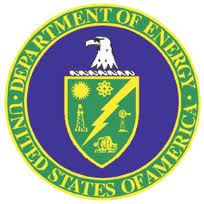 The hall was packed on Monday, August 26, to hear energy secretary Ernest Moniz deliver his first major policy address at Columbia University’s Center for Global Energy Policy. Just three months on the job, Secretary Moniz elaborated on President Obama’s Climate Action Plan in his remarks, emphasizing energy efficiency as the most cost effective approach toward reducing the nation’s greenhouse gas emissions. Energy efficiency and production, renewable and fossil fuel research, nuclear weapons development and environmental cleanup are only some of the unwieldy and often-controversial issues managed by the Department of Energy (DOE) under Moniz’s leadership. About 3,300 of the agency’s 16,000 federal employees and 93,000 contract workers occupy the James V. Forrestal headquarters in southwest Washington, D.C., with the rest in diverse facilities around the country ranging from Argonne National Laboratory to Yucca Mountain nuclear waste repository.
The hall was packed on Monday, August 26, to hear energy secretary Ernest Moniz deliver his first major policy address at Columbia University’s Center for Global Energy Policy. Just three months on the job, Secretary Moniz elaborated on President Obama’s Climate Action Plan in his remarks, emphasizing energy efficiency as the most cost effective approach toward reducing the nation’s greenhouse gas emissions. Energy efficiency and production, renewable and fossil fuel research, nuclear weapons development and environmental cleanup are only some of the unwieldy and often-controversial issues managed by the Department of Energy (DOE) under Moniz’s leadership. About 3,300 of the agency’s 16,000 federal employees and 93,000 contract workers occupy the James V. Forrestal headquarters in southwest Washington, D.C., with the rest in diverse facilities around the country ranging from Argonne National Laboratory to Yucca Mountain nuclear waste repository.
The federal government’s first agency tasked with managing energy-related policy dealt with coal and petroleum development before World War II. The Manhattan Project building the first atomic bombs expanded policy concerns to nuclear energy, managed after the war by the Atomic Energy Commission (AEC). The AEC regulated the private nuclear power industry in the 1950s, but the Energy Reorganization Act of 1974 created the Nuclear Regulatory Commission (NRC) to oversee the nuclear power industry and the Energy Research and Development Administration (ERDA) to manage nuclear weapons and energy development programs. Oil supply shortages in the 1970s highlighted the need for a more coordinated national energy policy, and President Carter created a new department consolidating the ERDA, the Federal Power Commission and other agencies (though the NRC remains independent) when he signed the Department of Energy Organization Act of 1977. The new cabinet-level DOE has a mission “to ensure America’s security and prosperity by addressing its energy, environmental and nuclear challenges through science and technology solutions.”
MIT physicist Ernest Moniz was confirmed as the 13th secretary of energy in a bipartisan, 97-0 show of support in May. At his swearing-in ceremony, Moniz asserted that his commitment to the President’s clean energy and climate agenda drove his decision to return to the agency, where he was Under Secretary of Energy during the Clinton years. The department under Moniz will build on energy efficiency programs developed under his predecessor, Steven Chu. For example, the Better Buildings Challenge, launched in 2011, is a public-private partnership where commercial, industrial and community organizations commit to improving energy intensity of their building portfolios by at least 20% over 10 years and to sharing their successes with the market. Moniz also expressed support for bipartisan energy efficiency legislation currently under consideration, saying, “The time is right.”
Yet efficiency is only the first step toward the administration’s goal of controlling the nation’s energy future. Another stated priority for the department under Moniz is bolstering research in renewable energy sources, including solar, wind, geothermal and biomass. But in keeping with Obama’s “all-of-the-above” energy strategy, the DOE’s research portfolio also includes applied research on hydraulic fracturing technology and on carbon capture and storage for coal- and oil-burning facilities. Tasked with promoting economic as well as energy security, the agency also supports studies leading to innovations such as the use of nanomaterials in cancer treatment and endeavors to deploy technologies developed in DOE labs in the marketplace. The breadth of research sponsored by the DOE involves tens of thousands of scientists, engineers and technologists, addressing many of the most challenging questions in the physical, chemical, and biological sciences today.
National nuclear security is also a key aspect of DOE’s mission. Moniz, at his swearing in, focused on the importance of ensuring the safety and reliability of the U.S. nuclear stockpile, advancing goals of nuclear non-proliferation and preventing nuclear terrorism. Efforts to promote international nuclear safety currently include meeting with Japanese scientists to analyze radioactivity around the Fukushima Daiichi nuclear power plant. Domestic cleanup of radioactivity resulting from Cold War weapons production also remains a DOE responsibility. One World War II plutonium production site, Hanford, has already cost $40 billion for leak containment, hazardous waste disposal and other mitigation techniques and is expected to cost at least $115 billion more. One of the most unusual LEED-Gold Certified buildings in the federal portfolio is the Hanford Pump and Treat System, designed to clean contaminated groundwater.
DOE’s proposed budget for FY2014 is 28.4 billion, including 11.7 billion for nuclear security, 5.8 billion for environmental cleanup, 4.7 for applied energy and 5.2 billion for science programs. In his remarks at Columbia University, Secretary Moniz praised especially DOE programs that support development of clean energy technologies, including a loan program with a $34.4 billion portfolio, sometimes attacked for backing Solyndra but also credited with supporting one of the world’s largest wind farms, major solar generation and thermal energy storage systems and Tesla Motors’ award-winning electric cars. In applauding DOE-backed technological, economic, and environmental successes, Moniz said, “The future may not be always ten years away.”
